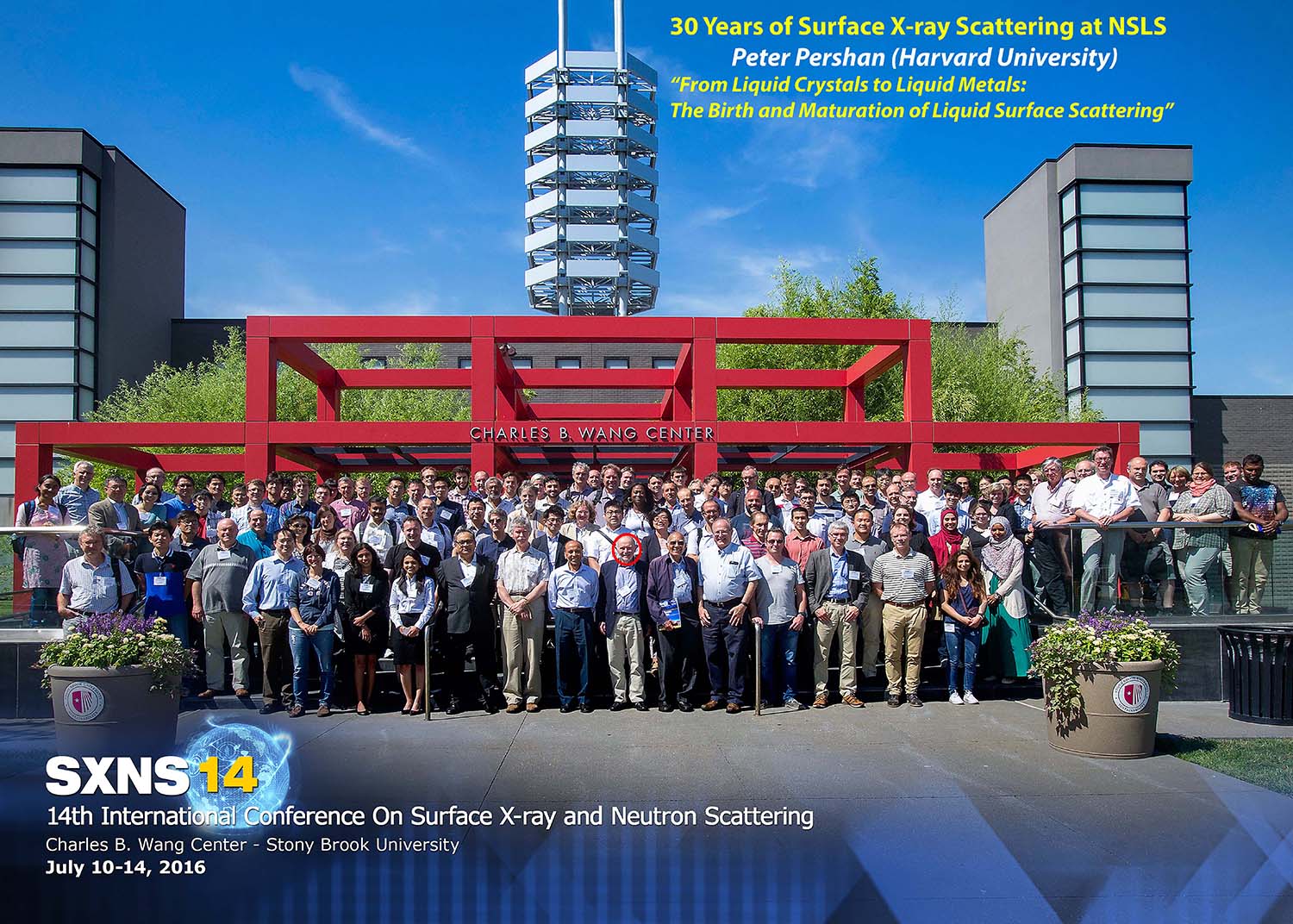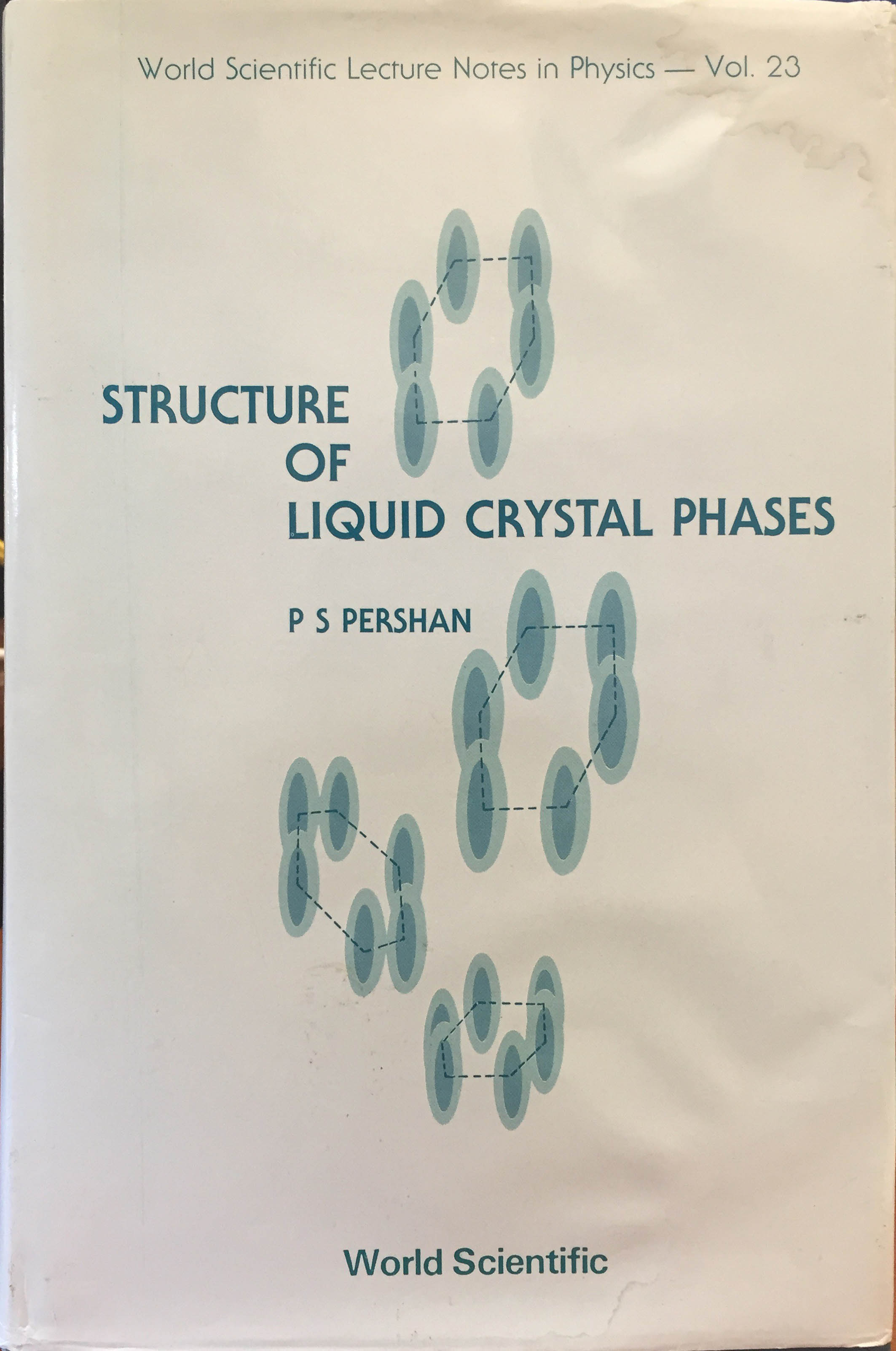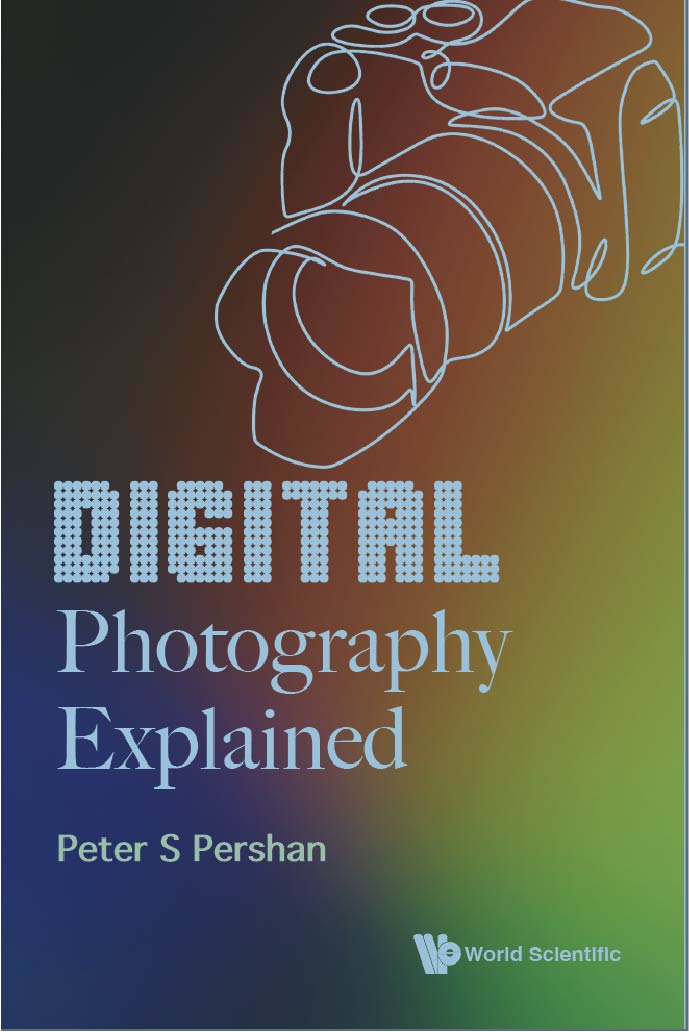
My career in Physics began with graduate studies in the Harvard Physics Department in the fall of 1956 and continued at Harvard for nearly 60 years when I retired as the Frank B. Baird, Jr. Professor of Science (Emeritus) in July 2015.
To view photos from my hobby Click Here
Click here for a Chronology of Peter's Positions
The following photograph was taken in July of 2016 at the SXNS 14 International Conference on Surface X-ray and Neutron Scattering that celebrated ~30 Years of Surface Scattering at Brookhaven National Laboratory.
I was honored at this conference for my role in founding the field of Liquid Surface X-Ray scattering.

In the 30 years from the early 1980s to retirement my students and I used
the lastest developments in synchrotron generated X-rays to study fundamental
statistical properties of condensed matter with emphasis on the thin liquid films and the surfaces of bulk liquids.
Studies included X ray scattering experiments on 2D phases of freely suspended thin smectic phases and the normal structure of wetting films on solid and liquid substrates. Two special results from wetting films included the free surface of superfluid 4He and the Casimir force due to critical fluctuations in a binary liquid. Along with Als-Nielsen I developed new instrumentation for studying the horizontal free surface of liquids and carried out pioneering studies of the structure and dynamics of the liquid/vapor interface of water, elemental and metallic alloys, and Langmuir monolayers on water.
The first 30 years of my research encompassed a variety of areas. My PhD (1960) was done in the Physics Department at Harvard. The term cross-relaxation that I coined in my PhD thesis was incorporated in Abragam’s book “The Principles of Nuclear Magnetism” and formed the basis for a seminal paper on spin energy transfer in MASERS. My understanding of traveling wave tubes lead to the introduction of phase matching in two widely cited papers on Non-Linear Optics (NLO). These papers were the initial studies that my mentor Nicolaas Bloembergen continued and for which he was awarded a Nobel Prize in 1981. The effective Hamiltonian (EH) that I developed for NLO has parallels in much of current quantum optical phenomena. For example the EH due to circularly polarized light breaks time reversal symmetry and induces magnetization proportional to the Verdet coefficient of both diamagnetic and paramagnetic materials. Contributions from the 1960s through 1970s were in areas of Magnetic resonance, Magneto Optics and Laser Light Scattering. I later studied liquid crystals, collaborating in the development of a theoretical explanation of the hydrodynamics of liquid crystals and writing the book “Structure of Liquid Crystal Phases” shown below.
I have published three books. The one on Liquid Surfaces and Interfaces that is displayed on the left was published in 2012. Most of my X-Ray research in described in that book. The book on Liquid Crystals on the right was published about 25 years earlier.Finally, the book on the right has just been published (2023)



The following table contains a list of People at Harvard who Participated in the most recent 30 years of Peter's X-Ray Research.
|
|||||||||||||||||||
|---|---|---|---|---|---|---|---|---|---|---|---|---|---|---|---|---|---|---|---|
|
|
Former Members
|
||||||||||||||||||
Most Recent
|
Suzanne Amador |
||||||||||||||||||